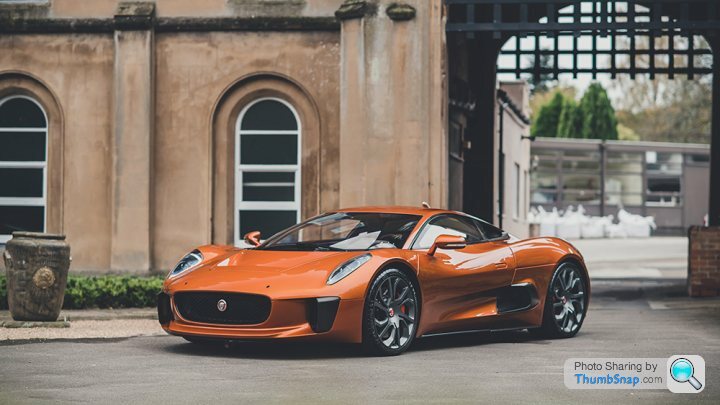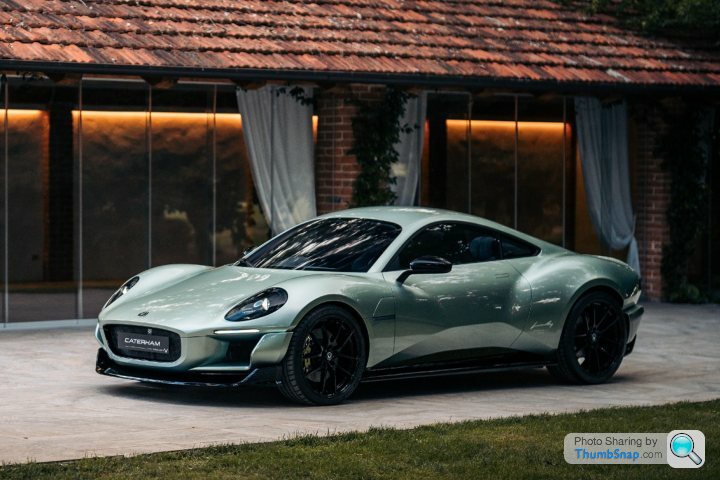All-electric Caterham Project V revealed
Possibly the most convincing case for an EV sports car yet - providing it gets built...

Welcome to a very different sort of Caterham. As you can clearly tell, this isn’t a Seven. It isn’t even a Seven derivative with wheel arches and roof welded on. Nope, it’s a three-seat, fully-electric sports coupe called Project V – and it points to the British marque’s first new road-going production car in three decades.
Obviously, there’s a lot to digest here. For a car company that currently produces one model (and said model’s design hasn’t changed drastically in 70-odd years), Project V not only comes out of the blue, it also appears to mark a major departure from what we’ve come to expect from the ultra-lightweight sports car maker. So before I go any further, there are a few things we need to cover off. Firstly, this isn’t an attempt to cannibalise the Seven. Caterham sees its current offering as the perfect weekend toy, with Project V serving as a way to take the mundanity out of everyday driving. Crucially, though, it’s been designed with the company’s core principles in mind. Think lightweight, driver-focused and timeless.
It's a pretty-looking thing, isn’t it? Given that the Seven has always majored on function over form, chief designer Anthony Jannarelly (you may know him from the brilliantly bonkers Design-1) has somehow managed to create a look that’s distinctly Caterham with precious few cues to draw upon. “The key thing with this car was not to over style it, because that's, I think, a signature from Caterham”, he told PH. It all starts with the oval grille, which mimics the air intake on a Seven and provides cooling to batteries, while the front arches and creases down the flanks are reminiscent of the Seven’s wings. Jannarelly insists that Caterham Cars owner, Kazuho Takahashi, is a Lotus Elan fanatic, with the rear lights loosely based on those of the Series 1.


The only embellishments to the car’s design are a pair of winglets either side of the front “mouth”, a splitter, deep side skirts and a rear diffuser. While they look purposeful, Caterham hasn’t undertaken an aerodynamic study yet. That’s likely to change later in the car’s future development, but it’s all part of Project V’s “timeless” design that the company hopes will remain relevant for many years to come, just like the Seven. “The principle with this car is that you shouldn't think of the next generation,” Jannarelly adds. “If we can produce it as long as possible, we'll do it.”
So, the elephant in the room. Project V has been designed from the ground up to be an electric car. Combustion engines aren’t on the cards, nor will they ever be. And although Caterham recently unveiled the EV Seven concept, combustion power remains a big draw for its buyers - and most PHers. Caterham isn’t trying to win us over with ludicrous power and acceleration figures, however; rather it’s fixated on delivering a driver experience that’s solely focused on engagement. Project V is therefore powered by a single, rear-mounted electric motor that outputs a fairly modest 272hp, firing you and two others to 62mph from a standstill in 4.7 seconds. Brisk, if not electrically so – and that’s exactly what Caterham is aiming for.
The really impressive figure here is how Project V performs on the weigh-in. Caterham is targeting a 1,190kg kerb weight, making it one of the lightest EVs in existence short of the ballistic McMurtry Spéirling. That includes a 55kWh battery, which again isn’t large by conventional electric car standards, but doesn’t need to be given there isn’t much car to shift in the first place. The firm hasn’t disclosed a range figure yet, though it does say the lithium-ion pack uses ‘advanced thermal managed’ and should muster a 20-80% charge in around 15 minutes via a 150kW rapid charger.


Then there’s the way the car is packaged. Rather than stuffing the batteries directly under the cabin, lowering the centre of gravity but raising the driving position, Caterham has instead split the battery into two locations: one behind the passenger compartment and the other below the legs of the occupants. That means your backside will be as close to the floor as it would in any other sports car, only your feet will be slightly raised – similar to the driving position in a single-seater. The company is also doing away with a front boot, which allows the wishbones to be brought further inwards and, apparently, saves 7kg in the process. It’s considerably cheaper, too, as it doesn’t need to fork out on pricey hinges and lining the boot with plastic and carpet.
This, for Caterham CEO Bob Laishley, is how to make Project V financially viable for a firm that only produces 500 cars a year. And, as has always been the way with the Seven, Caterham has cherrypicked off-the-shelf OEM parts for its EV sports car to prevent costs from spiralling. For instance, door apertures are an incredibly expensive development area, so the company has simply slapped on the design from a Mk3 Audi TT. It’s an area that only diehard TT fans may notice if they look closely, but it potentially saves the company millions in development. “That philosophy of repurposing OEM technology is what CA's always been about, and we want to carry that through with this,” notes Laishley.
Even up close, Project V looks every bit a viable production car. That’s partly down to the company “trying to do some of the basic engineering now that will [come to] in the production car”, says the CEO, rather than dreaming up a radical design concept that bears little resemblance to the final product. It also helps that Caterham has called upon the services of Italdesign to bring the concept to life and figure out some of the engineering challenges that arise with a full-blown production car. Essentially, the boring bits you don’t notice (cabin ergonomics, battery cell design, plastics etc) that are vital in making the car feel as though it’s been bolted together by an established OEM.


If you’re heading there this weekend, you’ll get to see the result in person, as Italdesign has put together a full-scale model for the Goodwood Festival of Speed. Having already taken a look at the model at the firm’s headquarters in Turin, it’s a little longer than the renders suggest – especially compared to an Alpine A110 or Lotus Emira. As you can see, Caterham has used Project V’s longer wheelbase and body to fit a single seat in the rear, which would otherwise have been used as empty luggage space. A reverse McLaren F1, you could say, only there’s just enough space for a child in the back. It’s certainly an uncommon layout, though Caterham says you’ll be able to spec a second rear seat if you want to justify it as a car for the school run.
That’ll only happen if Project V reaches production, of course. Laishley makes it clear that the car is very much in the concept phase and while Italdesign has played its part in bringing the concept together, that doesn’t necessarily mean it’ll handle production if the car gets green-lit. “Whether we'll be successful, history will tell us in the future. But there's a sensible budget [that has] been put together for this. There's a business case that works for this at a volume and a price,” he adds. “We’re talking of making multiple thousands of these a year, for a decade, at a sensible price.”
So, how much are we talking about then? Well, Caterham is targeting £80,000, with a potential release in 2025 or 2026. So far, the only competition on the horizon is the upcoming electric Porsche Cayman and Boxster (which are only two-seaters) and potentially an Alpine A110 EV (which is still a long way off). No doubt there will be some people not keen on an engineless Caterham, but the company believes Project V is its best bet for sustainable growth while maintaining Seven production. Plus, all the signs point to a very compelling product that, if the stars do align, could very well be among the first to get the whole electric sports car thing right. Wouldn’t that be something?





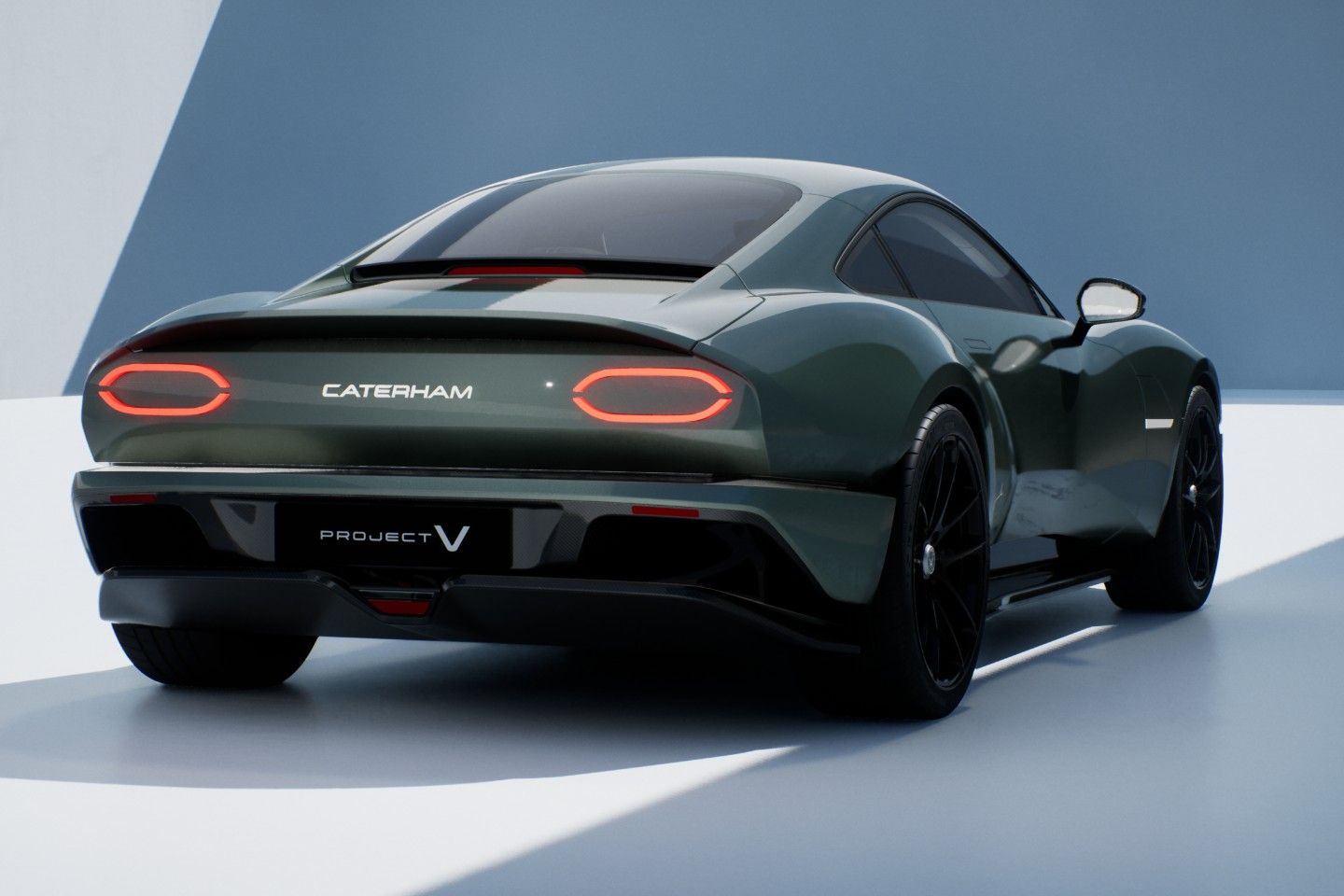

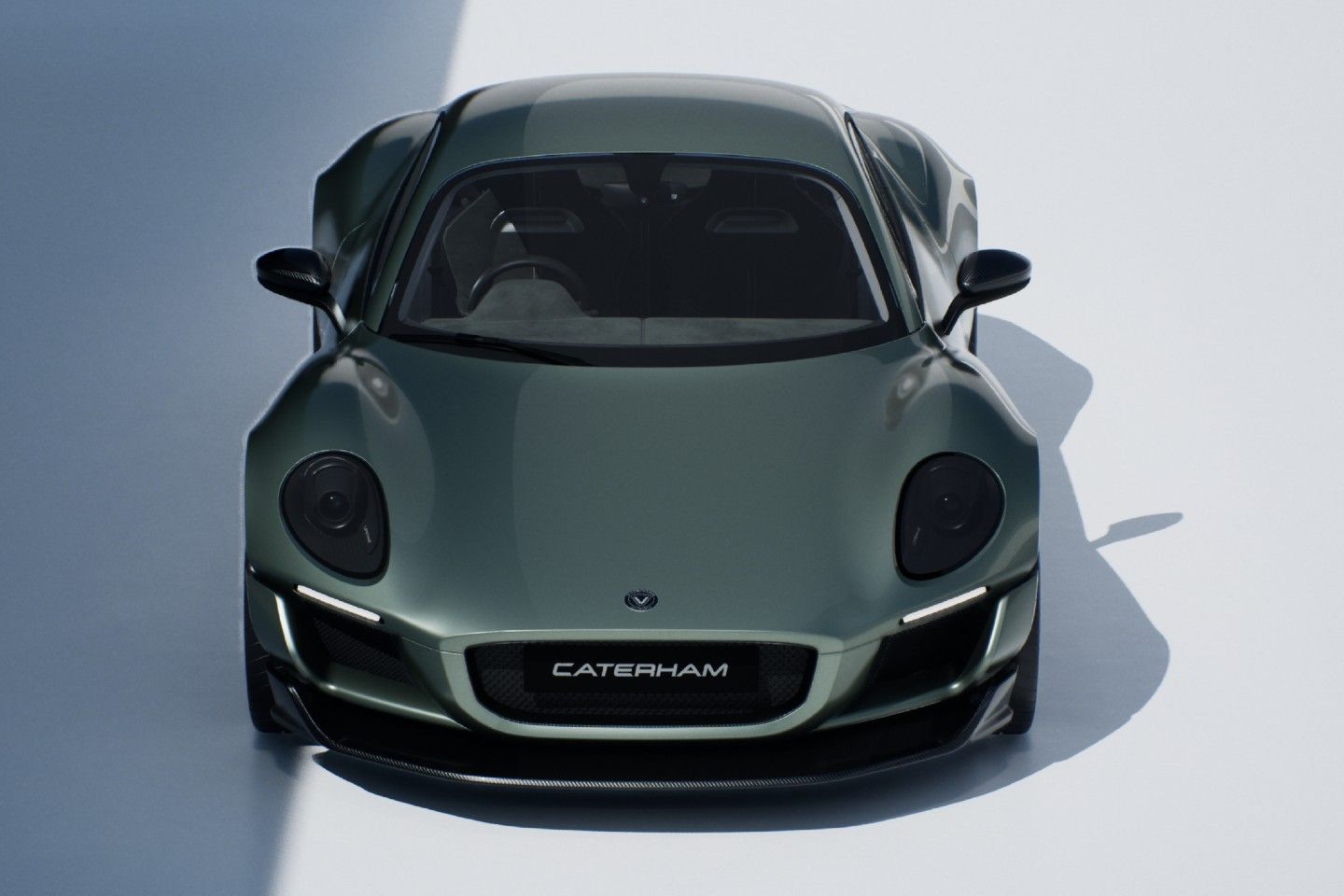




Chassis looks to be a hybrid of aluminium extruded beams and carbon fibre, if the ghost images are to be believed.
If they can manage 3 miles per kWh, which should be easy enough even at Caterham's level of tech for such a relatively light car (by EV standards), that battery should be good for a 150 mile+ range, which is ample for this sort of car - in something like an Elise, you usually need a break to regain the feeling in your backside at about half that, in my experience!
Also, believe the should release a more powerful version maybe even an AWD version.

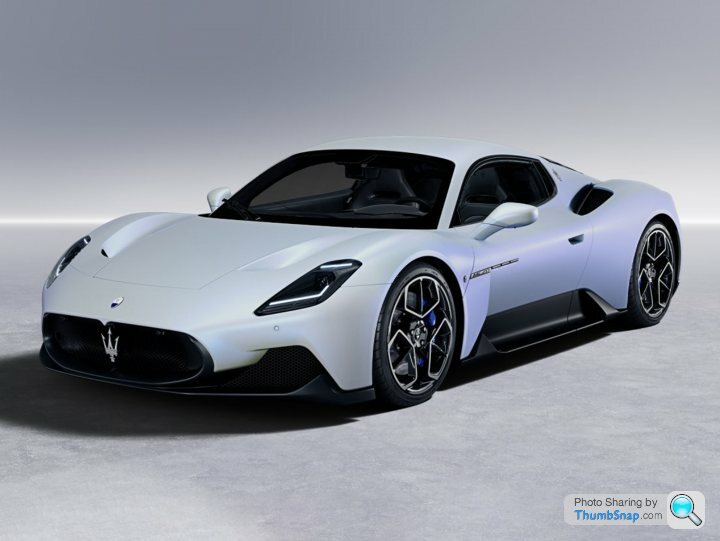
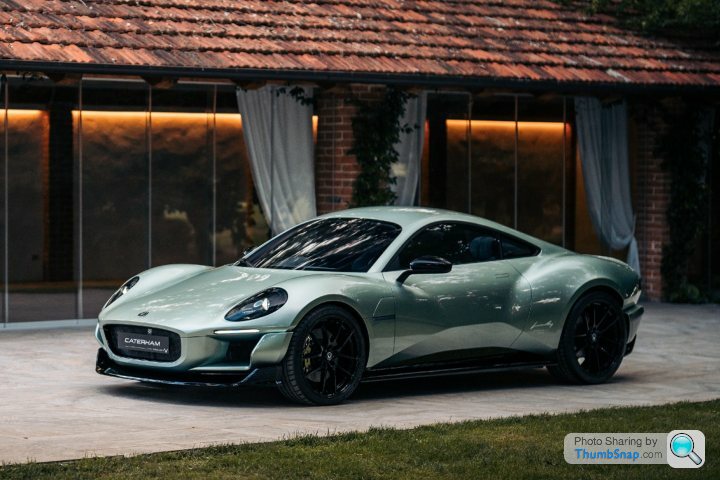
Are we saying it's longer than an Emira? Why so big? If so the kerb weight is even more impressive. So they could make it smaller and lighter and 2 seat only presumably?
I'm guessing the current design and 3 seat layout is to give an example of the sort of new packaging opportunities an EV can give or something.
Regardless, what a great and lovely thing.
Gassing Station | General Gassing | Top of Page | What's New | My Stuff





